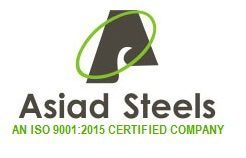Stainless steel bolts have been around for several years and have established themselves as the go-to fastener for various applications. They are widely used in the automotive, engineering, and manufacturing industries, and their corrosion-resistant properties have made them a popular choice in marine environments. However, not all stainless steel bolts are the same. This blog post will delve into the properties and uses of the 316 stainless steel bolt.
What is 316 Stainless Steel Bolts?
316 Stainless Steel Bolt is a screw used mainly in extreme weather conditions. It has a higher corrosion resistance than carbon steel bolts due to its addition of molybdenum and nickel content. This makes it ideal for places affected by seawater, although it can also be found in the chemical, food processing, and pharmaceutical industries. The bolt excels at resisting pitting, crevice corrosion and stress corrosion cracking caused by chloride solutions. All these attributes make it perfect for any situation that involves high pressure or extreme temperature changes.
Properties of 316 Stainless Steel Bolts
Physical Properties of 316 Stainless Steel Bolts
316 Stainless Steel Bolts have excellent corrosion resistance capabilities due to the presence of molybdenum and higher amounts of nickel. These bolts are also known for their high tensile strength, ranging from 70,000 to 80,000 psi (depending on size). Additionally, these bolts feature excellent wear-resistance properties when used in non-corrosive environments. Other physical characteristics around hardness and ductility also make them suitable for various applications in many industries.
Mechanical Properties of 316 Stainless Steel Bolts
316 stainless steel bolts have high corrosion resistance and strength, making them ideal for harsh environments. They also offer excellent pitting and crevice corrosion resistance, superior to other grades of stainless steel. Additionally, their mechanical properties make them suitable for various fastening applications with varying load levels. With a yield strength ranging from 30-45 ksi (kilopounds per square inch) and tensile strength ranging from 75-95 ksi—doubling that of a grade 2 bolt—they are ideal for many demanding jobs.
Uses of 316 Stainless Steel Bolts
- 316 Stainless Steel Bolt is a type of austenitic stainless steel that contains molybdenum, chromium, and nickel.
- It has great corrosion resistance and is suitable for high-temperature and aggressive environments.
- It is commonly used in the food and beverage industry, as well as the pharmaceutical and chemical industries.
- It is also used in constructing power plants, oil and gas refineries, and petrochemical plants.
- 316 Stainless Steel Bolt is also used in the marine industry, as it is resistant to pitting and corrosion from salt water.
- It is commonly used to manufacture valves, pumps, and other equipment that comes into contact with salt water.
- 316 Stainless Steel Bolt is also used in the aerospace industry, as it has high strength and durability.
- It is commonly used in constructing aircraft engines and other parts subject to high temperatures and stress.
- 316 Stainless Steel Bolt is also used in the medical industry, as it is biocompatible and does not cause an allergic reaction in patients.
- It is commonly used in the manufacture of implants and other medical devices.
Conclusion:
The 316 stainless steel bolt is a versatile and reliable fastener that finds application in various industries. Its high corrosion and oxidation resistance make it ideal for harsh environments, while its high tensile strength makes it perfect for high-stress applications. From marine to medical equipment, the 316 stainless steel bolt continues to be a popular choice, and its durability and reliability ensure it will remain so for years to come. When installing 316 stainless steel bolts, it is crucial to follow manufacturer specifications to maintain the integrity of the connection and ensure optimal performance.

